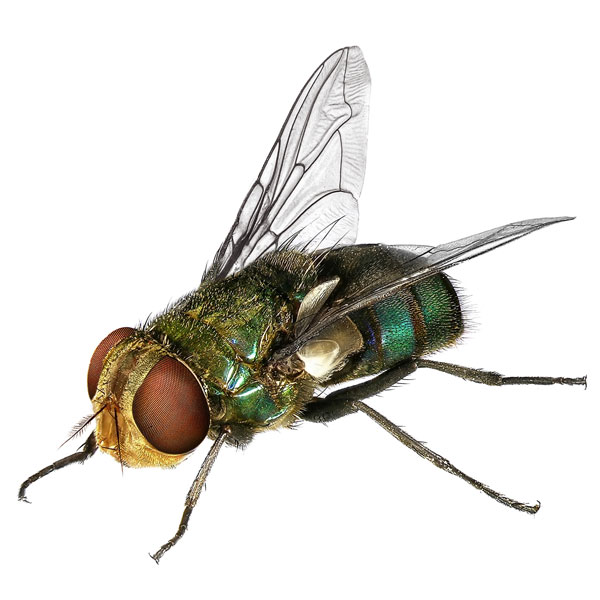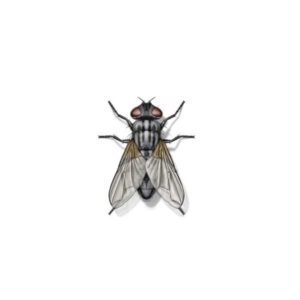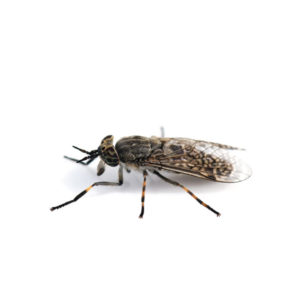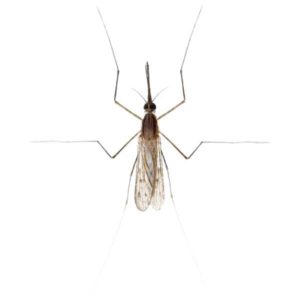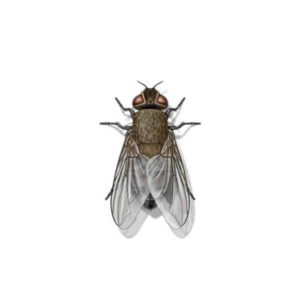Blow flies are one of the most common flies found around dead animals. They prefer highly unsanitary habitats, and because of this, they may be vectors of disease pathogens, such as dysentery. These flies are distinguished by their bright metallic appearance and are abundant around commercial, institutional, industrial, and residential buildings when they are located near recycling centers, garbage dumps, slaughter-houses, and meat processing plants. Blow flies can pick up faint traces of odor of decay and can fly up to 12 miles in search of a suitable carcass to lay their eggs. Understanding the biology, behavior, and control methods of flies is crucial for maintaining a healthy and safe environment. Unsure on the type of fly you are dealing with? Take a look at our fly identification page to learn more about some of the most common flies found in North Carolina.
Blow Fly Identification
What Do Blow Flies Look Like?
Distinguishing features of blow flies include their size, ranging from 6 to 14 mm in length, and their vibrant, metallic bodies which can appear in shades of green, blue, or even black. These flies possess large compound eyes that give them excellent vision, and their larvae, commonly referred to as maggots, are legless, cream-colored, and can be found in decaying organic matter.
Signs of a Blow Fly Infestation
The most obvious sign of an infestation is the presence of adult flies around waste, decay, or dead animal matter. Additional indicators include finding larvae within garbage, meat, or decaying materials, accompanied by a distinctive, foul odor emanating from their breeding sites. High levels of fly activity inside the house often point to an indoor breeding site, which could be something as overlooked as a forgotten garbage bag or a dead rodent within the premises.
Habitat, Diet, Life Cycle & Bites
Where Do Blow Flies Live?
Blow flies thrive best in weather that is warm and humid. They normally lay their eggs on meat, fish, or dead animals, but will also lay eggs in decomposing organic matter, like garbage, animal manure, decaying vegetables, grass clippings, and poorly managed compost piles.
Diet of a Blow Fly
The diet of blow fly larvae consists of decomposing organic material, providing them with the necessary nutrients for rapid growth. Adult blow flies, in contrast, feed on a variety of substances, including nectar, plant sap, and the fluids of decaying matter, which aids in the decomposition process but also in the transmission of pathogens.
Life Cycle of a Blow Fly
The life cycle of the blow fly is a fascinating study of efficiency and adaptation, comprising four distinct stages: egg, larva (maggot), pupa, and adult. Under ideal temperatures, blow flies can develop from egg to adult in as little as 7 days. Many homeowners have witnessed this behavior as a mass emergence of maggots crawling from their backyard trash cans when kitchen waste placed in these trash cans was not sealed in a plastic trash bag.
Blow Fly Bites
Blow flies do not bite or sting. They are, however, strongly attracted to human foods and garbage, making cooking outdoors difficult when they are present. As with house flies, they may be involved in the transmission of disease agents acquired from garbage or animal feces and subsequently deposited onto human foods. The primary threat from blow flies is the distribution of disease-carrying organisms that affect humans such as salmonella food poisoning, Dysentery, Cholera, various parasitic worms, and many others.
If you are dealing with a blow fly problem on your property, contact your local fly exterminators.
Are Blow Flies Dangerous?
Although blow flies do not bite or sting, they are considered dangerous due to their role as vectors for bacteria and pathogens. Their life cycle, which involves contact with decaying organic matter, allows them to pick up and spread diseases to humans and animals. They are capable of contaminating food and surfaces, posing significant health risks in both residential and commercial settings.
How to Get Rid of Blow Flies?
Controlling a blow fly infestation involves a multi-faceted approach:
- Elimination of Breeding Sites: The most effective strategy is to remove the sources of attraction. This includes regular disposal of garbage, proper storage of food, and removal of dead animals or decaying organic material from the premises.
- Sanitation: Maintaining cleanliness is key in preventing infestations. This includes cleaning up after pets, securing compost bins, and ensuring that garbage cans are tightly sealed.
- Chemical Control: Insecticides and baits can be effective in reducing adult fly populations. However, these should be used as a last resort and in accordance with local regulations and safety guidelines.
- Professional Fly Extermination Services: For persistent or large-scale infestations, it is advisable to seek professional help – that’s where Bug Out can help! Our fly control experts identify and eliminate blow fly infestations through tailored treatment plans and effective long term prevention strategies.
Blow Fly Prevention Tips
Prevention is always better than cure, especially when it comes to blow fly control:
- Secure Garbage: Ensure that all garbage is placed in sealed bags and containers to prevent blow flies from accessing food sources.
- Regular Cleaning: Routine cleaning of potential breeding sites, including pet areas and garbage storage locations, can significantly reduce the likelihood of an infestation.
- Exclusion Techniques: Installing screens on windows and doors can prevent adult flies from entering the home.
- Monitor and Manage: Regularly inspect your home and property for signs of decay or dead animals, which can attract blow flies looking for breeding sites.
Need help with Blow Flies control?
FAQs
What Causes Blow Flies in the House?
The presence of blow flies in a house is typically caused by available breeding sites, such as exposed garbage, decaying food, or an unnoticed dead animal in or around the property. Ensuring cleanliness and removing potential breeding sites can help prevent an infestation.
What Is the Difference Between a Fly and a Blowfly?
While “fly” is a broad term encompassing many types of flying insects, including house flies, fruit flies, and others, blow flies are a specific family known for their metallic appearance and association with decaying organic matter. The key differences lie in their appearance, habits, and preferred breeding sites.

